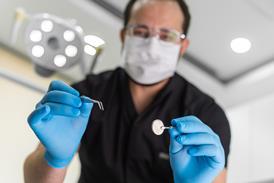- Rise in trusts with neonatal mortality rates at least 5 per cent higher than average
- Shrewsbury and Telford, Morecambe Bay among trusts rated “red”
- Charity warns data “sobering and unacceptable”, with government targets “off track”
The proportion of trusts with maternity services “red rated” for neonatal mortality rose from around a quarter in 2021 to a third in 2022, according to the latest national audit.
The latest Mothers and Babies: Reducing Risk Through Audit and Confidential Enquiries report, published on Friday, classifies trusts from red to green, according to how far above or below they are their peer group providers.
Nationally, there were increases in the neonatal mortality rate per 1,000 live births in 2022 compared with 2021, rising from 1.65 to 1.69 per 1,000 total births. Neonatal death is when a baby dies in the first 28 days of life.
Of 121 trusts, 41 (34 per cent) were rated “red” for neonatal mortality in 2022, as their rates were over 5 per cent higher than their peer group average. This compares with 32 trusts (26 per cent of 123 trusts) rated “red” for neonatal mortality in 2021.
There were, however, also some areas of improvement year-on-year. The number of trusts rated “green” – with neonatal death rates more than 15 per cent lower than the average in their peer group – increased from three in 2021 to eight in 2022, marking a significant improvement from 2020 and 2021.
No trusts were rated “red” for stillbirths in 2022, a substantial reduction from 17 in 2021, while the overall national stillbirth rate fell from 3.54 to 3.33 per 1,000 births.
HSJ has reported on the data from the review, which excludes deaths due to congenital anomalies, as they contribute significantly to mortality but are generally out of maternity services’ control. This is consistent with HSJ’s reporting from previous years.
Scandal trusts among those underperforming
Among those “red” rated for neonatal mortality were Shrewsbury and Telford Hospital Trust and University Hospitals of Morecambe Bay Foundation Trust, which have both been subject to high-profile investigations into deaths and harm.
SaTH was rated “red” for the second year running, having been rated “orange” (mortality rates within 5 per cent of peer average) in 2020, while UHMBT’s performance deteriorated from orange in 2021 to red in 2022.
SaTH acknowledged its neonatal mortality was “too high” and that it had appointed the Royal College of Physicians to review its care. Medical director John Jones said it had delivered 93 per cent of 210 actions from both Ockenden reports.
But he added: “The death of any baby has a profound and permanent impact, and we are doing all we can to understand and reduce the risk of this happening, wherever possible, to future families.”
Meanwhile, UHMBT offered its condolences to affected families, and said it reviewed three neonatal deaths in 2022 which found no recurring themes. It said based on unpublished 2023 data, it is no longer “red” but stressed it continues to “strive and learn” to improve its services.
The number of trusts rated “red” for overall infant mortality rates, which combine performance on neonatal mortality and stillbirths, increased from nine in 2021 to 13 in 2022.
Kath Abrahams, CEO of charity Tommy’s, described the data as “sobering and unacceptable”.
She added: “Frankly, we are not on track to meet the current ambitions to make pregnancy and birth safe for all women and birthing people and save babies’ lives. We are calling on the new Labour government to commit to renew and enhance these targets.”
The previous government set ambitions to reduce rates of neonatal mortality and stillbirth by 2025.
Deepening inequalities
The MBRRACE data also highlighted deepening inequalities between 2021 and 2022. The neonatal mortality rate for babies born to mothers from the most deprived areas rose to double the rate in the least deprived.
Among babies of Asian ethnicity, rates of neonatal death have been increasing since 2020, with rates among babies of Black and Asian ethnicity more than 50 per cent higher than for white babies.
Despite the gap narrowing in 2022, babies of black ethnicity are still more than twice as likely to be stillborn than white babies.
NHS England’s chief midwifery officer Kate Brintworth said: “While it is encouraging to see the stillbirth rate continuing to fall, we know much more work is needed to ensure all women and babies receive high-quality care… to tackle the differences in outcomes we are seeing.”
She added that NHSE had invested £186m in its maternity workforce, appointed the first ever national neonatal clinical director and national neonatal lead nurse, and allocated £45m to deliver more than 50 extra neonatal cots.
Source
Source Date
July 2024



























5 Readers' comments